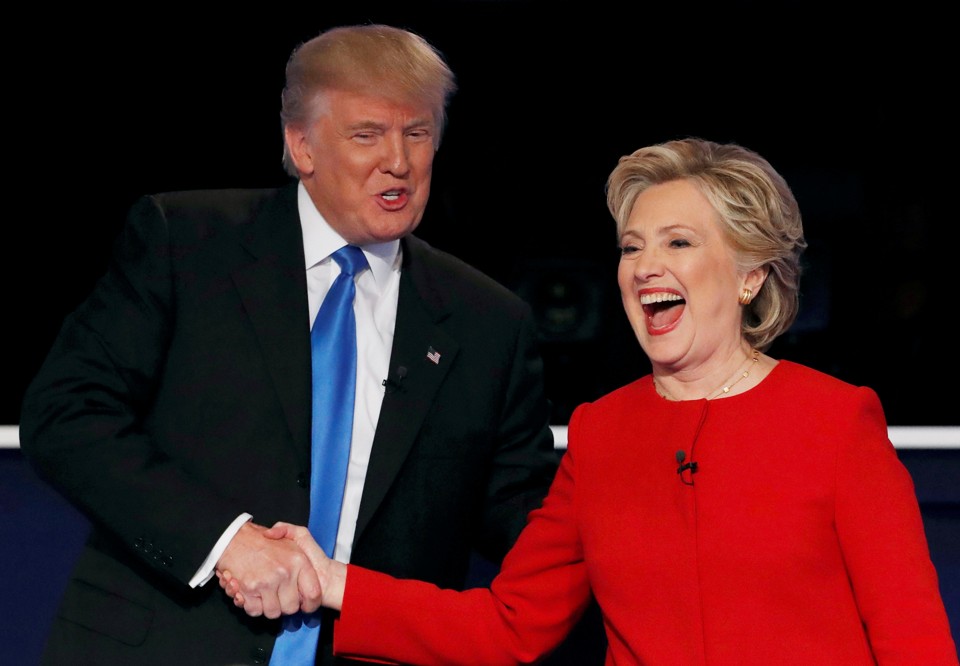
How Clinton Beat Trump in Their First Debate, By the Numbers The Democrat takes a page out of the Republican’s playbook.by Andre Tartar and Adam Tiouririne Tiouririne ( republished with permission of the authors and Bloomberg where this article appeared
Democratic presidential nominee Hillary Clinton took a page out of Republican Donald Trump’s playbook in their Monday night debate to beat him at his own game.
In the span of just a few hours, Clinton saw her odds of moving back into the White House rise from an already-high 69 percent before the debate to 81 percent afterward, according to prediction market aggregator PredictWise. Trump’s chances slumped accordingly. “This is a large shift” and relatively rare, happening only once or twice per election cycle, said PredictWise founder David Rothschild.

Clinton’s odds of winning several battleground states also improved over a comparable four-hour period: by nine points in North Carolina, four points in New Hampshire, and three points each in Pennsylvania, Ohio, and Colorado.

Snap polls conducted after the debate similarly favored Clinton, including 62 percent of respondents in a CNN poll and 51 percent in a survey by the Democratic firm Public Policy Polling. Even the Mexican peso, increasingly a barometer of Trump-related anxiety, rallied.
At the root of this emerging consensus was Clinton’s ability to control the agenda. At one point she parried a question about her private e-mail server with a scant 46-word reply, all the while keeping Trump on the defensive about his business practices and unreleased tax returns. Trump spoke more than Clinton, including interrupting and attacking 24 more times than his rival.

According to one measure, Trump also faced more scrutiny than Clinton, who announced that her campaign would provide real-time fact-checking on her website during the debate. On average across nine publications—including Bloomberg Politics and PolitiFact—Trump had an average of 11.1 statements scrutinized compared to 5.9 for Clinton.
Monday was also the first time that Trump came up against a candidate happy to let him have the floor. As the debate progressed, Clinton grew increasingly content to set off a firework with an attack line, then sit back and watch the show.

One such instance came toward the end of the debate, when Clinton critiqued “Donald’s rhetoric” about Muslim communities, sending Trump careening from the Middle East to NATO, then to Islamic State, the Iraq War, temperament, campaign advertising, and back to temperament again. He spoke for 1,041 words in all—about an eighth of his entire performance—without a word of substance from Clinton, who watched in apparent bemusement until rejoining the conversation with a relieved, “Whew. OK.” When Clinton did speak, she stayed on message, using policy-oriented keywords such as “jobs,” “taxes,” “police,” and “military” more frequently than Trump. Immigration, a major issue for Trump on the campaign trail, barely surfaced during the debate. Instead, Trump went where Clinton took him.

—Bloomberg contributor Adam Tiouririne of Logos Consulting Group advises senior business leaders on high-stakes communication and researches language, leadership, and the media.
No comments:
Post a Comment